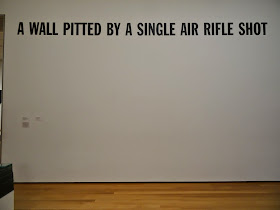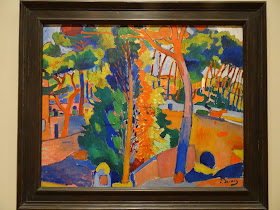Another long wordy but hopefully useful or at least somewhat thought-provoking post ~
It's
normal to want to do things for others to help them succeed. But I
think that we, as art teachers, need to remember how important it is to
empower our students. We all know those 'helicopter parents' who want
to know every step their child makes, who correct all the mistakes on
their homework, and who, hovering, do everything for them,
never letting them figure things out or make decisions on their own because they may just make a mistake or get hurt. The end result is, of course, kids who don't know how to make their own decisions, and who've never had a failure, never been hurt, and thus don't know how to handle it when the inevitable happens.
But here's the thing -
some of us are 'helicopter art teachers' and might not even realize it.
(I'm sure you know someone like this) So - in case YOU are a
helicopter art teacher, I want to give you some things to think about.
First, a little disclaimer: This is not a TAB post. If that's what you came here expecting to find, you may want to look somewhere else. But I'd love it if you'd stay!
I'll
start with the story of a student, a sweet but immature 5th grade boy
whose baby-like behavior kept him from forming many friendships; he was
an easy target. In 5th grade, students were working on a surreal
perspective hallway. Windows and/or doors were to be cut open with
X-acto knives (after a demo on usage and safety), and then magazine
images were added to create surreal elements. The boy told me that he
wasn't allowed to use a knife. He told me his mother still cut all his food. I
knew he was a Boy Scout, but when I asked, he told me he wasn't even allowed
to use a jackknife in scouting. I knew he had an obsessively hovering overprotective mom, and
an IEP, so I decided, after a discussion with the special ed chair, that since it was only a few quick cuts, I would just do them
for him so he could move on to complete the project.
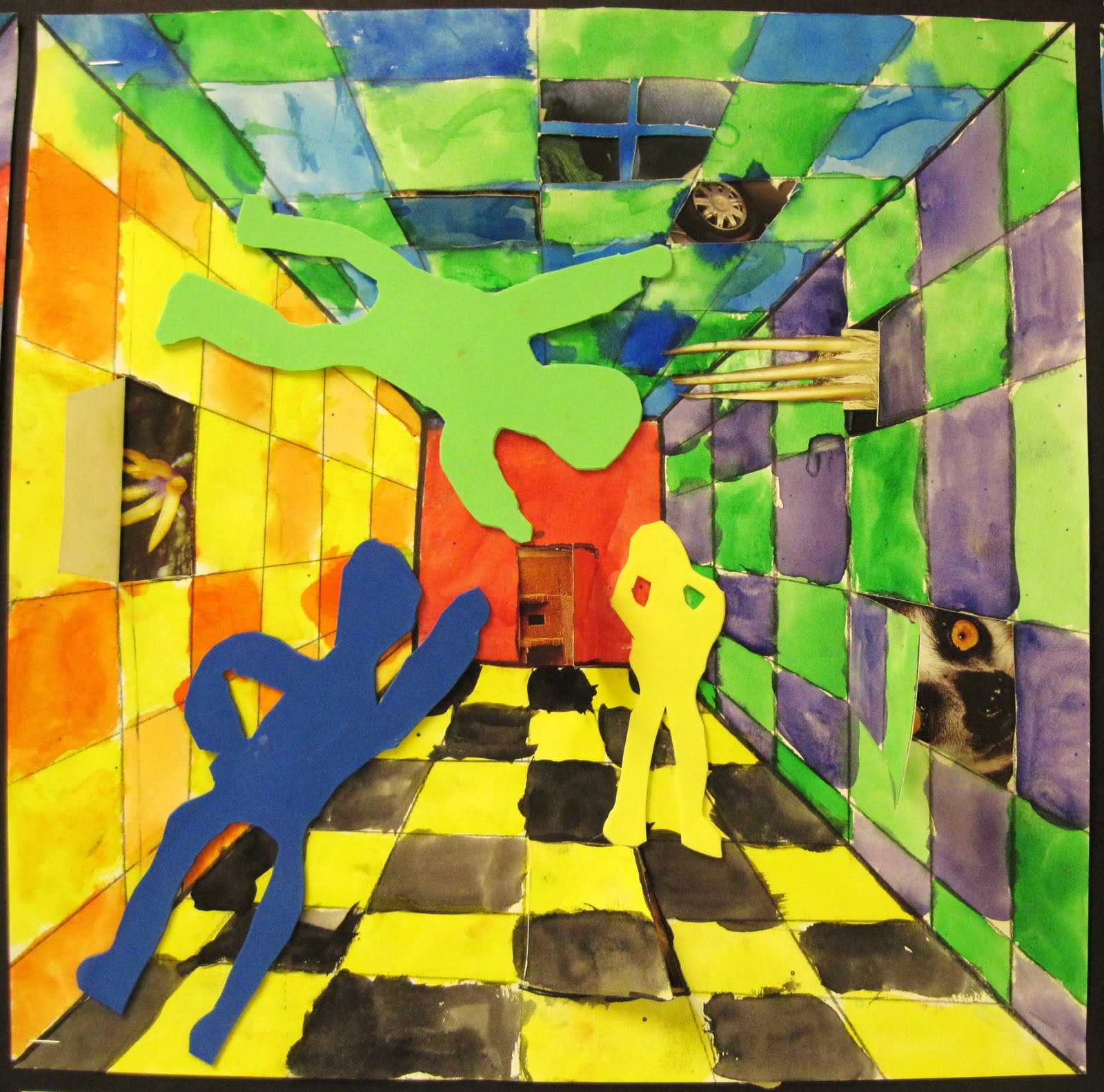
But the following year, in 6th grade, my
students were each creating a cartouche of their names in Sheetrock. We
were using woodcarving and linoleum carving tools, as well as sharp
blades, of course again with safety and usage demonstrations. I could see he was
worried, but I told him it was safe if he followed instructions, and I
wanted him to try and knew he could do it. He otherwise loved art, and I knew this would be a good step for him. Otherwise he couldn't
succeed at the project. And I knew they'd soon be learning to use
woodshop tools in technology class, anyhow. And of course, he was
successful, and
very proud of of his achievement. We don't learn how to do something if someone always does it for us!! More on this topic later...
Some
thoughts on distribution of materials. Most of you often pre-set our
tables
with materials needed for the class period, and I would sometimes do
that too. (If you wonder why I am writing in the past tense here, remember,
I'm retired.) And I know many of you keep containers on each table
with basic supplies: pencils, scissors, glue sticks, etc. Not me. I
used a lot of big paper, and a lot of messy materials, and I did not
want my tables cluttered with anything we weren't going to be using. My
opinion - if my students weren't going to be using pencils that day, or
scissors, or glue sticks, why would I have wanted them on the table? They'd just get in the way.
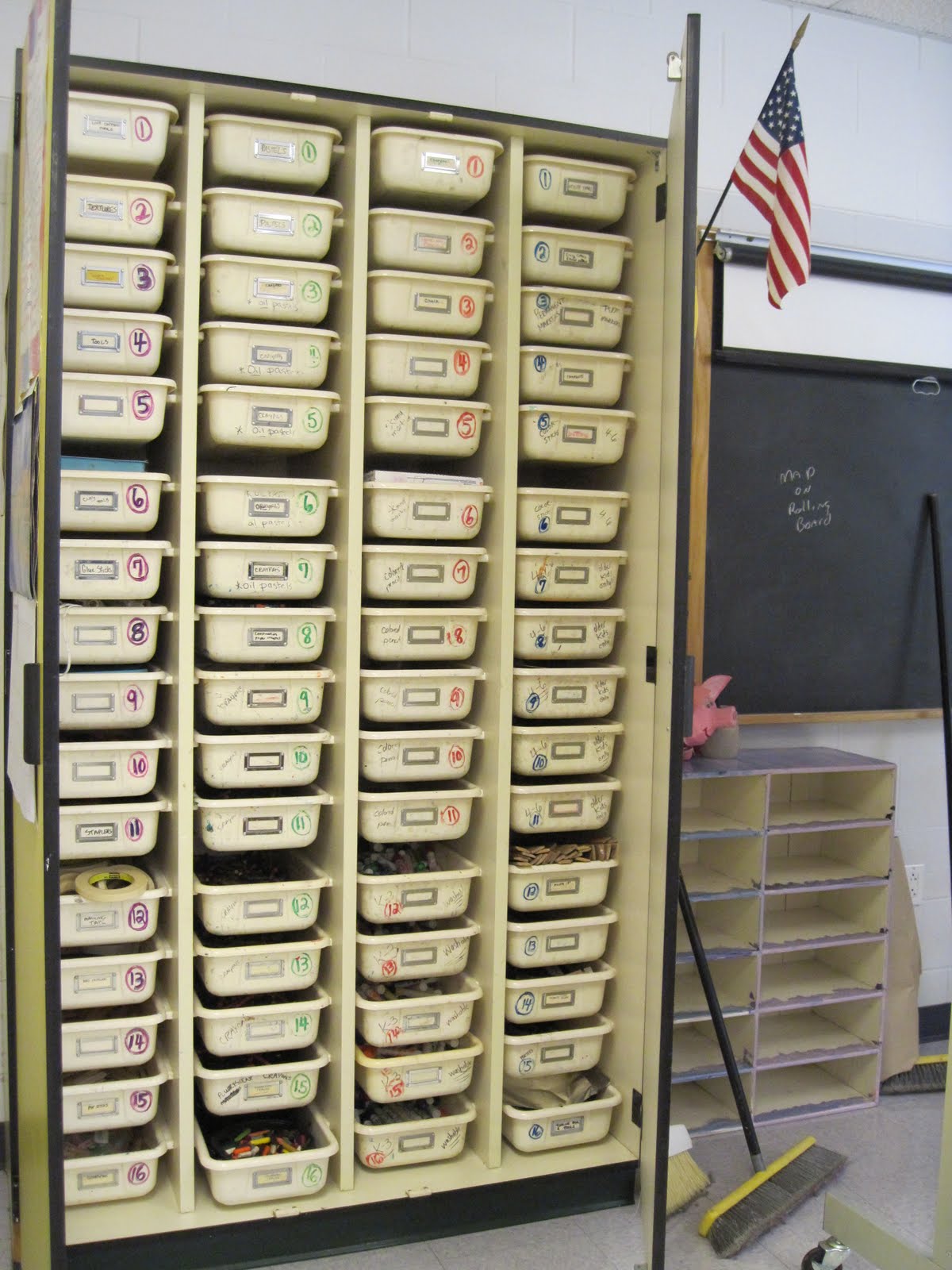
In
my classroom, I had a large unit with labeled bins at the front of the
room (above), a counter on the side of the room, and a low round table in the
center (below). I generally kept containers of both pencils and black Sharpies on the round table, and would often also use it as a place to put specific supplies that students would need for the day's class. If all students needed a scissors (or glue, or ruler, or some
other material) at the same time, I would have a student helper pass them out and collect them.
But, often, in a project with multiple steps done independently, I would simply leave
assorted materials on the round table. The students were told "If you are ready for a
scissors (or whatever), get up and get one." And when they were done
with the scissors, they'd get up and put it back, keeping their table clutter-free. This means
(*warning!*) that the students were frequently getting out of their seats to get what they need.
*An
aside here - since this means the kids were often walking with scissors, my
rule was this: 'points down, hands around'. And obviously no running in
the art room, ever. We chanted the 'scissor rap' together, with hand
motions. The kids knew that the was the only way they were allowed to
walk with a scissors was with their hand wrapped around the point.
Are you afraid of letting students get out of
their seats to get things? Think about how empowering it would be to
let THEM get the materials out, if they know where they are kept! Then, during any free choice time (I often had students in during lunch, for example), they could also go to the bins and find whatever they might want to use, instead of asking you for a specific material. *Note: the very top bins had materials I wanted to keep safe from young hands, such as the X-Acto knives. And I had plenty of storage elsewhere, so materials I did not want used regularly were kept elsewhere.
Certainly
you can (and should) set parameters. For example, while doing collage
projects, I might have put all the materials on the counter. Or while
weaving, all the yarn might have been in bins on the round table. Or
while doing a painting using many pre-mixed colors (such as in
this recent post),
I might put a large tray with all the pre-mixed colors of paint on the
round table. Students could get up, get ONE color (or ball of yarn), or
THREE collage items, and bring them to their table. When they needed a
new color or yarn, they'd have to return one color, and exchange it for
another. Or when they needed more collage materials, they'd simply get
up and get three more. All scraps were immediately placed in the recycle
box.

Having a classroom where kids are able to get up, move about, and
get what they need will make your life easier, and makes them more
independent. Can't find what you need? Get up and look for it! Your
paint water is dirty? Go change it! You need a different size paint
brush? Go find the right size! You spilled something on the floor? Wet a sponge,
squeeze it out tight, and wipe up the mess! Want to add another fun
layer to this? Put on some calypso music (or something else fun) and
make the rule that if you need to get up and get something, you have to
dance your way there! Then watch it happen!
And,
how about this: for students who can't figure out how to do the next step of the
project, or you simply don't remember what it was, this rule was posted
on my board:
Ask Three Before you Ask Me! This rule will empower students to be helpers. Oftentimes, this will be a win/win situation, as the student in need of help learns from a peer, and in the process, it frees you up to help someone who really needs your guidance.
Now, on to the topic (which I have talked about before, particularly in
this post written August 2010). The topic is the use of tracers/templates/stencils. Now I'm NOT going to say there is never a time and place to use a tracer; I'd be wrong. In particular, I have used tracers for geometric shapes (I often use everything from bottle caps to rolls of tape as circle tracers), and occasionally to serve as specific means, when the shape might have been incidental to the product. And I know some of you, particularly those with 30 minute classes, are working with serious time constraints, and need to find ways to get things done very quickly. What I however DO object to is the use of tracers in lieu of a child's drawing because 'it will look better'. What if the 3rd grade child below had used a tracer for her magnificent elephant, and if everyone in the class had also used elephant tracers? They would have lost the absolute magic of each piece of artwork being an original child's interpretation.
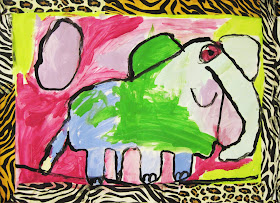
Instead, since we were going to be painting 'fauve' African animals, the students practiced drawing African animals using a series of projected and printed images. We looked at the animals, discussed what shapes made up their bodies, which way their legs bent, whether they had a neck, and so on. We practiced putting together the appropriate shapes to make the animal, and in the end, the kids learned a LOT about how to draw animals. I contend that learning this way will empower your students to make decisions, and they will have much more pride in their work, because it is truly theirs.
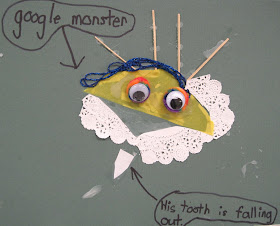 |
| grade 2 texture monster |
I recently saw a Facebook or blog post about monsters, where every child was given the same monster tracer, to fill with Zentangles. (If you are reading this, and it was your post, please know that I am NOT picking on you. I'm just presenting an alternative, my personal opinion. Please do not be offended.) Anyhow, the nice thing about monsters, or dragons, or creatures, or aliens, or even mermaids, is that we can use our imaginations to help us decide how they might look, since we do not have photos. So why have a tracer? Aren't we then just telling the kids that our perception of what a monster looks like is 'better' than theirs?
For the two dragons below, made by 3rd graders with tin foil, clear contact paper, and Sharpie markers, we began by brainstorming and writing on the white board what kind of features a dragon might have, and why. Is it going to fly? Then it might need wings. And so on. In the end, each dragon was created based on the unique vision of the artist who designed it, rather than a bunch of matching dragon shapes designed by me and simply filled in like coloring books. (To see more of the dragons created during this lesson, with a description of the process used,
look here.)
Again, for the 2nd grade 'texture creature' on the left below, or the 3rd grade alien portrait on the right, we brainstormed the many possibilities. And in the end, each student had a unique product. To see more work from either of these projects, or the kindergarten one below, follow these links:
texture fauves,
alien portraits,
blob monsters.
below, kindergarten 'blob monster'
Certainly it is our role as art teachers to guide. But we need to be careful about doing it for the student, rather than helping them to succeed on their own. Imagine, for example, when building plaster bandage 'people in motion' in three 6th grade classes, that one girl in each class chose to build a ballerina. Students were shown how to form the basic armature, and then took these projects in varied directions. Each of the ballerina-makers asked how to make a tutu. To each of them, I offered the same options, materials, and guidance, and I was thrilled that they individually each found a completely different solution within the offered parameters.
Their unique solutions are so much more interesting than they would have been if I simply had said: "do it this way". I'd give you a link to see more of these sculptures, but they have been posted more than once. But if you are interested, use the search bar on the right or the labels on the bottom of the blog, and search
6th grade, or
plaster bandage, or
sculpture, or
people in motion, or
people in action. You'll find them through various searches!!
My point is this: we should offer students the opportunity to become independent thinkers. We need to let them gain a level of independence to make them confident about their work, and less dependent on copying or tracing that of someone else. We need to prevent ourselves from being helicopter art teachers, hovering over our students and making all their decisions for them. Sometimes, yes, they will fail. And that, broadly, is the topic of my next post. Until then, I hope everything goes swimmingly well!
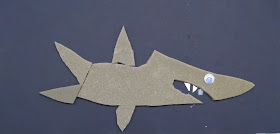 |
| grade 2 texture shark |

















